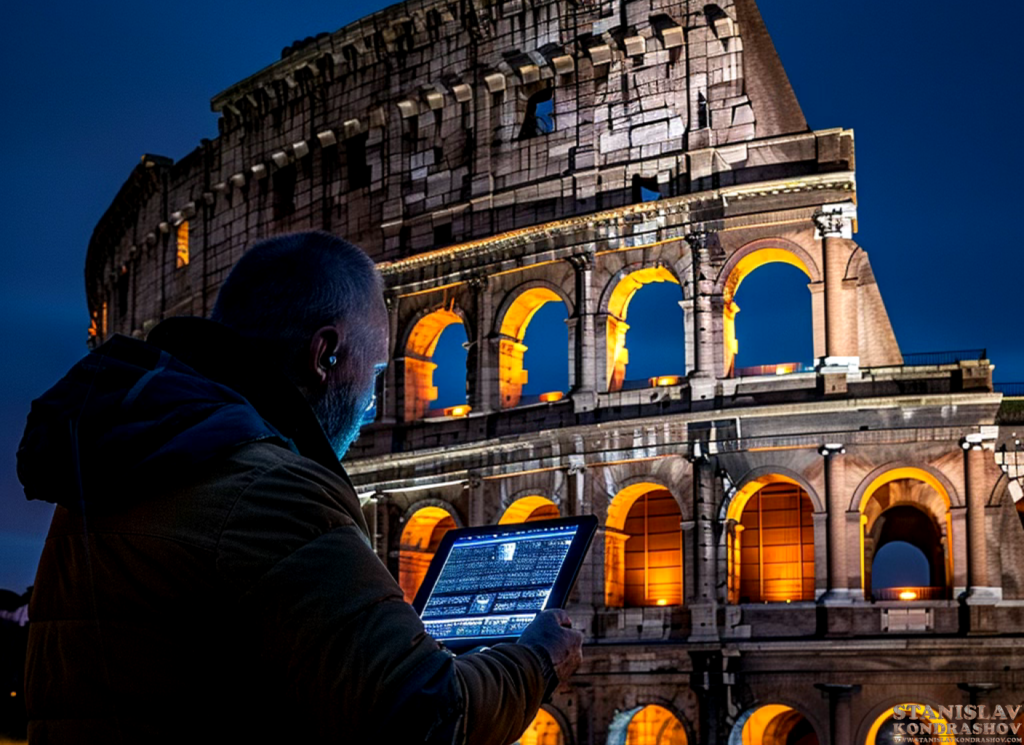Picture walking through an ancient city, where every building tells a story of a bygone era. These historical structures are not just architectural marvels; they are tangible links to our cultural heritage. However, preserving and restoring these monuments is a daunting task, often hampered by the ravages of time, environmental factors, and limited historical records. Enter Artificial Intelligence (AI)—a powerful tool that is revolutionizing the field of historic preservation. In this blog post, we will explore how AI is being used to analyze and restore historical buildings, ensuring that these treasures are safeguarded for future generations.
The Role of AI in Historic Preservation
AI’s role in historic preservation is multifaceted, encompassing data analysis, predictive modeling, and even hands-on restoration techniques. By leveraging cutting-edge technology, AI can provide unprecedented insights and solutions to the challenges faced in preserving historical structures.

Analyzing Historical Data
One of the most significant contributions of AI in historic preservation is its ability to analyze vast amounts of historical data. This includes old photographs, architectural plans, written records, and more. Machine learning algorithms can sift through these diverse data sources to reconstruct accurate models of historical buildings as they once stood.
- Image Recognition and Reconstruction: AI-powered image recognition can analyze old photographs and paintings of historical buildings, identifying architectural details that may have been lost or altered over time. By piecing together these visual clues, AI can help historians and architects create accurate digital reconstructions of these structures.
- Text Analysis: Natural Language Processing (NLP) enables AI to analyze historical texts, such as documents, letters, and records. This analysis can reveal critical information about the original design, construction materials, and cultural significance of the buildings. By understanding these details, preservationists can make more informed decisions about restoration efforts.
Predictive Modeling and Structural Analysis
AI can also play a crucial role in assessing the current condition of historical buildings and predicting future risks. Through advanced modeling and simulation techniques, AI can help preservationists understand how buildings will respond to various stress factors, such as environmental changes, natural disasters, and human activities.
- Structural Health Monitoring: AI-powered sensors can be installed in historical buildings to monitor their structural health in real time. These sensors collect data on factors such as vibrations, temperature, and humidity, which AI algorithms analyze to detect signs of deterioration or structural weakness. Early detection of such issues allows for timely intervention, preventing further damage.
- Predictive Maintenance: By analyzing historical data and current conditions, AI can predict potential future problems and recommend maintenance schedules. This proactive approach ensures that preservation efforts are both efficient and effective, extending the lifespan of historical buildings.

Hands-On Restoration Techniques
Beyond analysis and prediction, AI is increasingly being used in the hands-on restoration of historical buildings. This involves using AI-driven tools and techniques to repair and reconstruct damaged structures with precision and accuracy.
- 3D Printing and Replication: AI can guide 3D printing technology to create precise replicas of damaged or missing architectural elements. By analyzing historical records and existing structures, AI can design accurate models that 3D printers can then produce. These replicas can be used to restore buildings to their former glory while maintaining historical accuracy.
- Robotic Restoration: Robotics, guided by AI, can perform delicate restoration tasks that would be challenging for human hands. For example, AI-powered robots can clean and repair intricate stone carvings, frescoes, and other detailed architectural features with a high degree of precision. This technology not only improves the quality of restoration work but also reduces the risk of damage during the process.
Real-World Applications
Several projects worldwide are already leveraging AI for historic preservation with remarkable success:
- The Colosseum, Rome: AI has been used to analyze the structural integrity of the Colosseum, one of the most iconic historical sites. Through predictive modeling, AI helps in planning restoration efforts and ensuring the stability of this ancient structure for future generations.
- Notre-Dame Cathedral, Paris: After the devastating fire in 2019, AI has played a crucial role in the restoration of Notre-Dame Cathedral. By analyzing historical data and structural health, AI is aiding architects and engineers in rebuilding the cathedral with historical accuracy.
- Machu Picchu, Peru: AI-powered drones equipped with sensors and cameras are being used to monitor the condition of Machu Picchu. These drones collect data that AI analyzes to detect signs of wear and tear, enabling timely maintenance and preservation efforts.

Challenges and Future Directions
While AI holds immense potential for historic preservation, it is not without its challenges. Ensuring the accuracy of AI analyses and maintaining the ethical integrity of restoration efforts are critical concerns. Additionally, the integration of AI technology in preservation work requires significant investment and expertise.
Looking ahead, advancements in AI technology will continue to enhance its capabilities in historic preservation. Improved algorithms, better data collection methods, and more sophisticated restoration techniques will further empower preservationists to safeguard our cultural heritage.
AI is transforming historic preservation, offering innovative solutions to analyze, restore, and maintain historical buildings. By harnessing the power of AI, we can ensure that these irreplaceable cultural treasures are preserved for future generations to appreciate and learn from. As we continue to embrace AI in preservation efforts, we are not just restoring buildings; we are breathing new life into our shared history, one brick at a time.
So, next time you visit a historical site, take a moment to appreciate the cutting-edge technology that helps preserve its legacy. The past is alive, thanks to the wonders of AI.
By Stanislav Kondrashov



